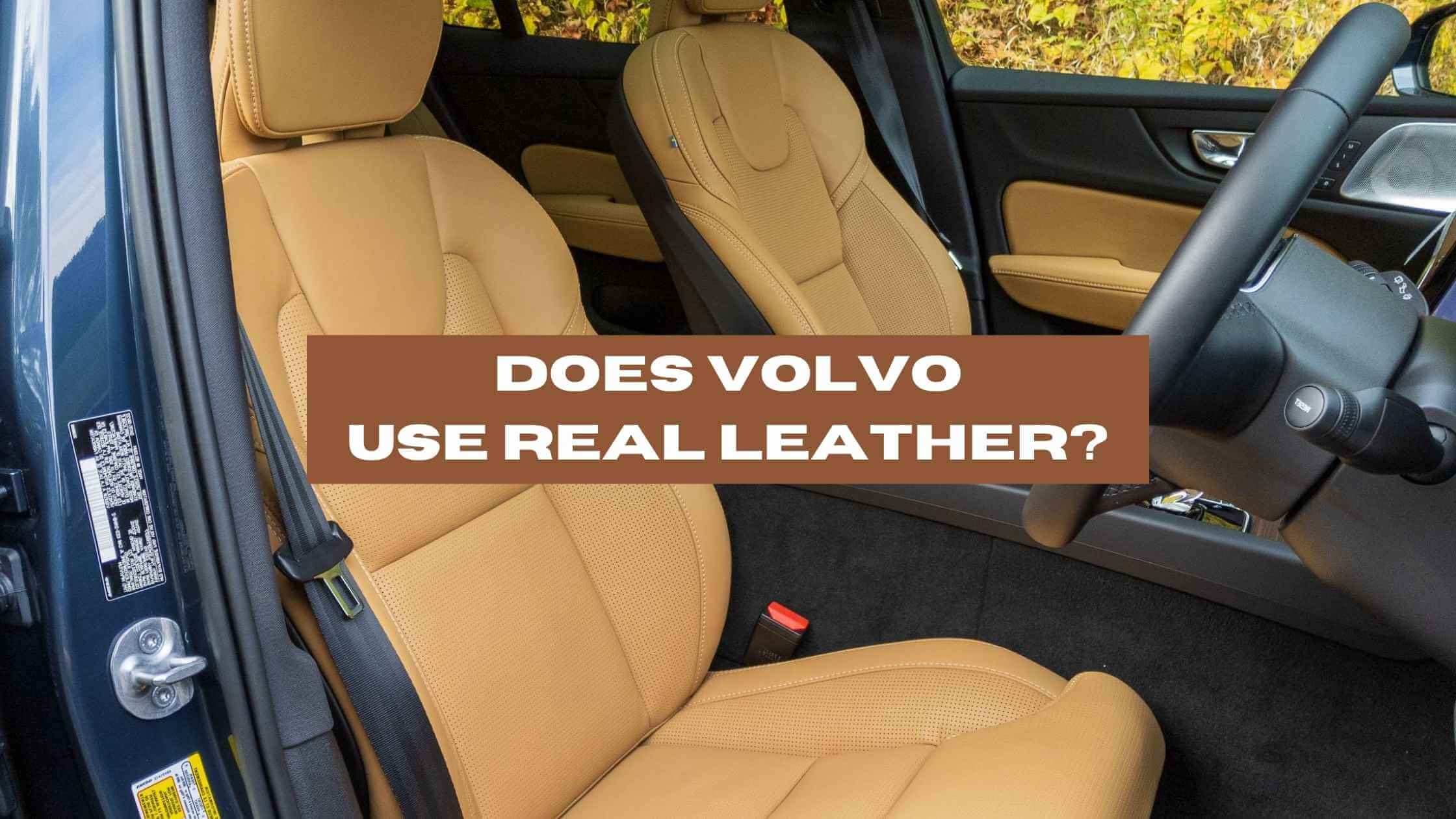Are you in the market for a new Volvo with leather seats? But does Volvo use real leather? Yes, Volvo uses real leather in some of its car models. However, the company is transitioning towards using sustainable and eco-friendly materials with the goal of becoming leather-free by 2030. These materials include textiles made from recycled materials such as plastic bottles and wood remnants from sustainable forests in Sweden.
Main Points:
- Volvo uses both real leather and alternative materials in their cars. Some models still have genuine leather seats, while others are leather-free.
- The company is committed to sustainability and aims to become leather-free in all its cars by 2030.
- Alternative materials used by Volvo include leatherette (a synthetic material resembling leather), recycled materials like PET bottles and corks, as well as natural materials like wool and cork.
- The Tailored Wool Blend is a sustainable material made from a mix of real wool and recycled materials, available in many Volvo models.
- Volvo focuses on sustainability in various aspects, including reducing its carbon footprint, investing in renewable energy, and ensuring ethical sourcing in its supply chain.
- The Volvo C40 Recharge, an electric model, is leather-free and features premium, sustainable interior materials.
- Traditional Volvo models, except for the S60 and V60, currently use real leather for their seats, but the company plans to introduce more sustainable interior options in the future.
Materials Used in Volvo Cars
When it comes to materials used in Volvo cars, the Swedish automaker has been making some interesting choices in recent years. In this section, we’ll take a closer look at the different materials that are used in Volvo cars, including leather and leather-free options, recycled and sustainable materials, wool, and other textiles.
Leather and Leather-Free Options
Volvo has a reputation for using premium materials in their cars, and leather is no exception. However, in recent years, the company has been moving away from leather in favor of more sustainable and ethical materials. The new C40 Recharge, for example, is completely leather-free, and other fully electric Volvo models will follow suit.
In place of leather, Volvo is using a variety of materials, including leatherette, which is a synthetic material that looks and feels like leather. The company is also using bio-based content and natural materials like wool and cork to create new, more sustainable materials.
Recycled and Sustainable Materials
Volvo is committed to sustainability, and the company is using recycled materials in many of its cars. For example, the new Nordico material is made from recycled corks used by the wine industry, recycled polyethylene terephthalate (PET) bottles, and other recycled materials. This material is used for the seats, door panels, and other interior components of the car.
The company is also using OMO, a new material that is made from recycled PET bottles and bio-attributed materials. This material is used for the carpets and floor mats in many Volvo models.
Wool and Other Textiles
In addition to leather and leather-free options, Volvo is also using wool and other textiles in its cars. The Tailored Wool Blend is a sustainable material made from a blend of real wool and recycled materials, and it is available in many Volvo models. The company is also using other textiles made from recycled materials, such as plastic (PET) bottles and wood remnants from sustainable forests.
Volvo’s Sustainability Approach
Volvo is committed to sustainability and responsible sourcing as part of its overall mission to become a more ethical and environmentally-friendly car manufacturer. Here are some key areas where Volvo focuses on sustainability:
Climate and Environmental Impact
Volvo is dedicated to reducing its carbon footprint and greenhouse gas emissions. The company has set a goal to have a fully electric car lineup by 2030, which will significantly reduce its environmental impact. Additionally, Volvo is working to reduce energy consumption in its manufacturing facilities and offices and is investing in renewable energy sources like wind and solar power.
Animal Welfare
As part of its commitment to sustainability, Volvo has announced that it will be phasing out leather interiors in its cars by 2030. This move is in line with the company’s focus on responsible sourcing and animal welfare. Instead of leather, Volvo plans to use alternative materials like recycled plastics, textiles, and other sustainable materials.
Supply Chain
Volvo is committed to responsible sourcing and ensuring that its supply chain is ethical and sustainable. The company works closely with its suppliers to ensure that they meet its high standards for ethical and sustainable practices. Additionally, Volvo is committed to transparency in its supply chain and provides information about its suppliers and their practices on its website.
Volvo’s Car Models and Their Interiors
If you’re wondering whether Volvo uses real leather for their car interiors, the answer is not straightforward. While Volvo has traditionally used leather for their car seats, they have recently introduced new textile interior options that are sustainable and eco-friendly.
Electric Cars and Their Interiors
Volvo has made a commitment to producing fully electric vehicles by 2030. As part of this commitment, the Volvo C40 Recharge is leather-free and uses premium interior materials that are both sustainable and high-quality. This means that if you’re looking for an electric car with a leather-free interior, the Volvo C40 Recharge is a great option.
Traditional Cars and Their Interiors
For traditional cars, Volvo has used leather for their car seats in the past. However, they have recently introduced two textile interior options in addition to leatherette: Tailored Wool Blend and City Weave. Tailored Wool Blend is a sustainable material made from a blend of real wool and recycled polyester, while City Weave is made from 100% recycled PET bottles.
While the Volvo S60 and V60 models come with synthetic leather sport seats, all other Volvo models use real leather for their car seats. However, Volvo has announced that they plan to ditch leather entirely from their vehicles by 2030, so it’s possible that we’ll see more sustainable interior options from Volvo in the future.
FAQ: Does Volvo Use Real Leather?
Are Volvo leather seats made from real leather?
Yes, Volvo has traditionally used real leather for its car seats. However, the company has recently announced its intention to become leather-free by 2030.
What type of leather is used in Volvo vehicles?
Volvo has used a variety of leather types in its vehicles, including Nappa, perforated, and smooth leather. The company has also used leather from sustainable sources, such as cows that are raised for meat production.
Does Volvo use synthetic leather for their seats?
Yes, Volvo offers synthetic leather seats, which the company calls “leatherette.” This material is made from a combination of plastic and fabric and is designed to look and feel like real leather.
Is Volvo moving away from using leather in its cars?
Yes, Volvo has announced its intention to become leather-free by 2030. The company has cited environmental concerns as the primary reason for this decision.
What is the difference between Volvo leatherette and leather?
Volvo leatherette is a synthetic material that is designed to look and feel like real leather. It is typically less expensive than real leather and is easier to clean and maintain. However, some people prefer the look and feel of real leather.
Do all Volvo models come with leather seats?
No, not all Volvo models come with leather seats. Some models are offered with leatherette seats, while others are available with cloth seats. However, leather seats are often available as an option on higher-end models.

